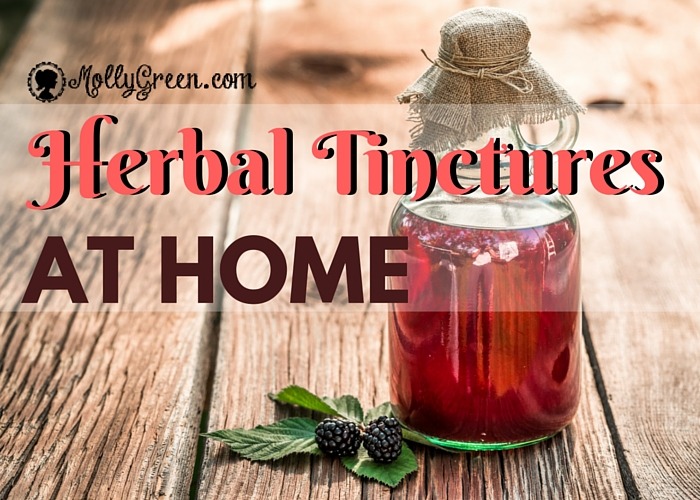For years, our family relied on herbal tinctures from the health food store. Tinctures are pricey, so we would hold out until we had a real emergency (anytime a family of nine catches the flu automatically initiates a “state of emergency”) and buy several bottles to carry us through the time of woe. However, this ritual screeched to a halt last year when we decided to learn how to make herbal tinctures ourselves.
The results? Not only were we able to make enough to supply us from October to April, but we were able to use it as a preventative method and not just a treatment. The monetary savings alone has made our homemade tinctures more than worth it.
What is an Herbal Tincture?
A tincture is when an herb or combination of herbs are allowed to infuse in a base (such as alcohol, vinegar, or vegetable glycerin) for several weeks. The base extracts the beneficial properties from the herb, leaving the powerful herbal properties in the base. This extraction makes it ideal for internal use. Herbal tinctures are indispensable during flu season, but combating viruses is just the beginning of their many uses. And vegetable glycerin is the most commonly used base in tinctures for children.
You’ll need
- Food-grade vegetable glycerin
- Fresh or dried herb(s) of choice
- 1-quart glass canning jar with a new lid
How To Make Herbal Tinctures with Vegetable Glycerin
Quick Note: Vegetable glycerin base is gentle, but it is not necessarily the best base for all herbs. I recommend researching to be sure you get a tincture with maximum benefits.
Step 1. Prepare Herbs
When using fresh garden herbs, I clean and harvest according to the method most appropriate for the herb. It is essential to research the herb(s) one is using. Many herbs are more potent during certain seasons or only have certain parts that are used for medicinal purposes.
Step 2. Combine the Herb and Glycerin
Once the herb is ready, fill a freshly-washed glass canning quart jar 3/4 full with the herb. Fill the rest of the jar with the vegetable glycerin leaving about 1-inch clearance space from the lid.
It’s important to watch for air pockets while pouring the glycerin and stir with a spoon if needed to ensure it covers the herb thoroughly. It’s also important that the jar is glass (not plastic or something else) and that both the jar and the lid have been thoroughly washed, as bacteria will ruin any tincture.
Step 3. Let It Sit
I mark the jar with the date and contents, then store in a dark, cool place—but not so far in the back cabinet that we forget it is there. (Of course, I would never do that! Ahem.) Shake it well every other day for 6–8 weeks.
Step 4. Strain and Label
Once the herb matter is spent, strain the liquid through a clean t-shirt or cheesecloth. (Tip: To make your herb go further, pour hot water over the herb matter you have already strained and re-strain. The hot water thins the glycerin and gives you a diluted, but still beneficial tincture. Just be sure to mark it as diluted on the jar.)
Pour the strained herbal tincture into a freshly washed glass jar or individual tincture bottles (available at some health food stores). Label what herbs the tincture contains, date, and how it is to be used.
There you have it! With a little research, you can learn how to make herbal tinctures on your own! Plus, you’ll get to create several different tinctures designed to meet a host of health ailments for your family.
Disclaimer: I am not a doctor or herbalist. I offer this advice solely from personal research and experience. Please be aware some herbs can interfere with medications, pose risks for certain health conditions or have side effects. This article is for information purposes only and is not intended to diagnose, treat or prevent any illness or disease.
Kenzi Knapp’s desire is that her pen points others to God’s offer of reconciliation through the blood of Jesus Christ. A homeschool graduate currently enrolled in God’s Great Course of Faith, Kenzi lives with her family on an Ozark homestead. She enjoys writing, biking, playing the piano, perusing old books, and encouraging young women to build mission-centered cottage industries at her blog, Honey Rock Hills.






We make our own tinctures too! 🙂 Thank you for sharing your methods with us on the Art of Home-Making Mondays at Strangers & Pilgrims on Earth!
Thanks Jes! I’m glad you found it helpful. 🙂